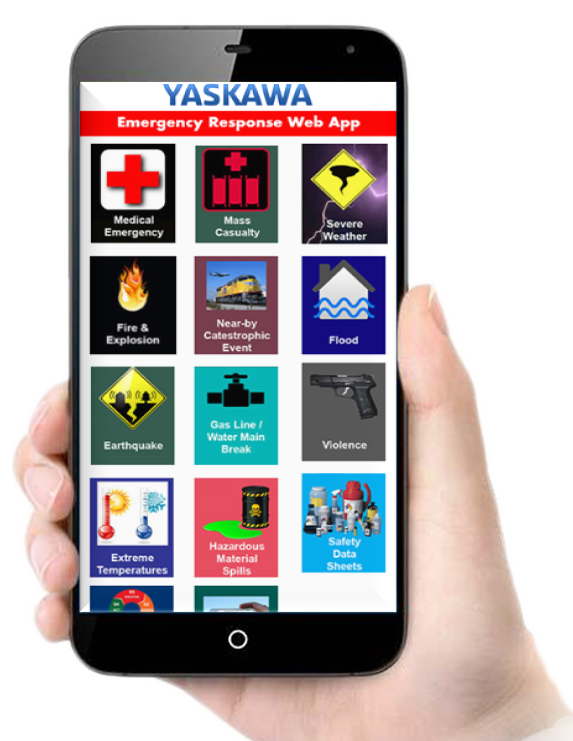Policy Key Points
Examples of life threatening injuries are:
Yaskawa facilities are located in areas with rapid response times from emergency response professionals. Average response time for each Yaskawa facility is under five minutes.
911 Shall be called for any of the following situations:
The Nurse Hotline should only be used for work related, non-emergency injuries and illnesses of Yaskawa associates.
| Rev # | Description | Release Date | Approved by |
|---|---|---|---|
| 0 | Conversion of old safety documents, rewrite, and issue | 7/12/2017 | Thurwanger |
| Review Date | Reviewed by | Changes Required (Yes/No) | Revision # if updated |
|---|---|---|---|
| 1/10/2018 | Thurwanger | No | |
| 1/17/2019 | Thurwanger | No | |
| 1/9/2020 | Thurwanger | No | |
| 1/19/2021 | Thurwanger | No | |
| 1/13/2022 | Thurwanger | No | |
| 1/26/2023 | Thurwanger | No | |
| 1/11/2024 | Thurwanger | No | |
| 1/16/2025 | Thurwanger | No | |
Policy Video
Yaskawa offers First Aid, CPR, and AED training to associates who request it.
The training is delivered in one of two forms: Classroom A full-day classroom training conducted in one of our Illinois or Wisconsin sites, or Blended Associates complete on-line training at their own pace and complete in-person skills verification with a qualified instructor.
Click here to request First Aid / CPR / AED training

We recommend that you add a shortcut onto your phone. You may want to encourage your family and friends to load it onto their phones since it includes information about how to respond to emergencies outside of Yaskawa.
The Emergency Response Web App includes recommended actions for:
This web app also includes:
Click here for instructions for loading the web app onto your smartphone.